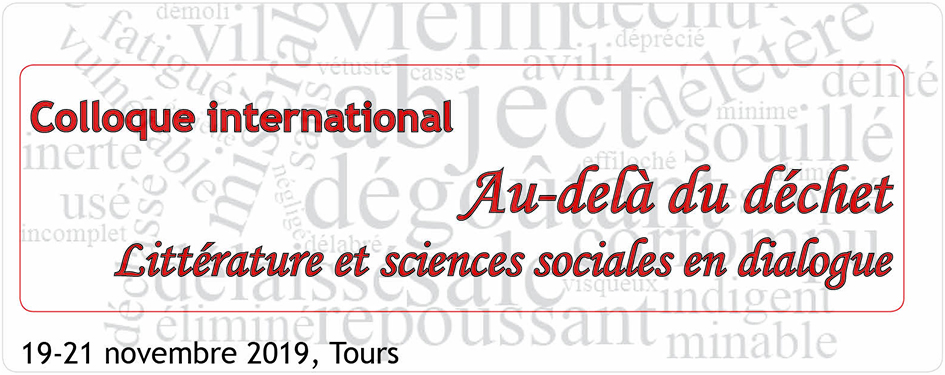Waste has infiltrated literary texts from its earliest origins, from The Epic of Gilgamesh, where the titular hero and his beloved friend Enkidu cut down trees in the Cedar Forest and kill the land guardian and demigod Humbaba, to the corpse of Hector dragged in the dust behind Achilles' chariot in Homer's Iliad. The twenty-first century, though, presents a remarkable challenge to this tradition: waste suggests not just the pitiful demise of an individual, or even a particular culture, but the extinction of humanity and nonhuman species alike. The urgency of paying attention to waste seems all too current, whether we focus on Shakespeare or Don Delillo.
This paper responds to a key question from the Call for Papers for this conference: “What can literary language express about the nature of this relationship to waste, which spatial, economic, social, or image analyzes would not have grasped?” Attending to two literary works as case studies for how waste studies can prove a productive paradigm in analyzing literature in terms of slow practice through narrative construction, I will argue that slowness can prove a means to inculcate an ecological sensitivity and awareness beyond the act of reading.
The plot of Toni Morrison's The Bluest Eye stages the relentlessly systematic trashing of an African-American girl, Pecola Breedlove, as she attempts to negotiate the racist, sexist society of Ohio in 1941. Young, black, female, ugly, poor—which category of wasted human most determines her fate? It seems, of all the categories, female is the most damning of all. Pecola, herself a non-entity in her family and culture, possesses the ability to see the worth in the lowly. Yet she withers in the land which kills her. Typical of waste literature, we encounter the synchronic time of specific places through the archeology of the Breedlove's home. Morrison discusses the structure of her novel: "My solution—break the narrative into parts that had to be reassembled by the reader" (xii). The novel lies in pieces, debris to be reconstructed by the reader implicated in racist ideology.
In Wolfgang Hilbig's The Sleep of the Righteous [Der Schlaf der Gerechten 2002; translated 2015], the speaker's childhood town is tainted by the remains of the munitions factory, where concentration camp prisoners worked, as well as the presence of a mine, whose literal filth infiltrates the ground, lungs, and atmosphere. The novel ultimately acts as a poignantly eerie elegy for the passing—politically and in the memory—of the GDR. Emblematic of works within waste aesthetics, Hilbig has divided his novel into chapters or short stories, as no single sustained narrative can express the love-hate relationship C. has for the homeland he no longer has after its dissolution.
Unlike biological, sociological, or environmental studies that measure statistically the damage humans inflict in the anthropocene, literary language offers the impact of affect and aesthetics through linguistic embodiment. One form of waste literature emerges through slow practice, making the reader collaborate in the measured process of co-creating the emotional impact of a literary work. Such slowness results in an enduring impact and heightened sensitivity to the ecological damage for which we all are culpable.

 PDF version
PDF version
